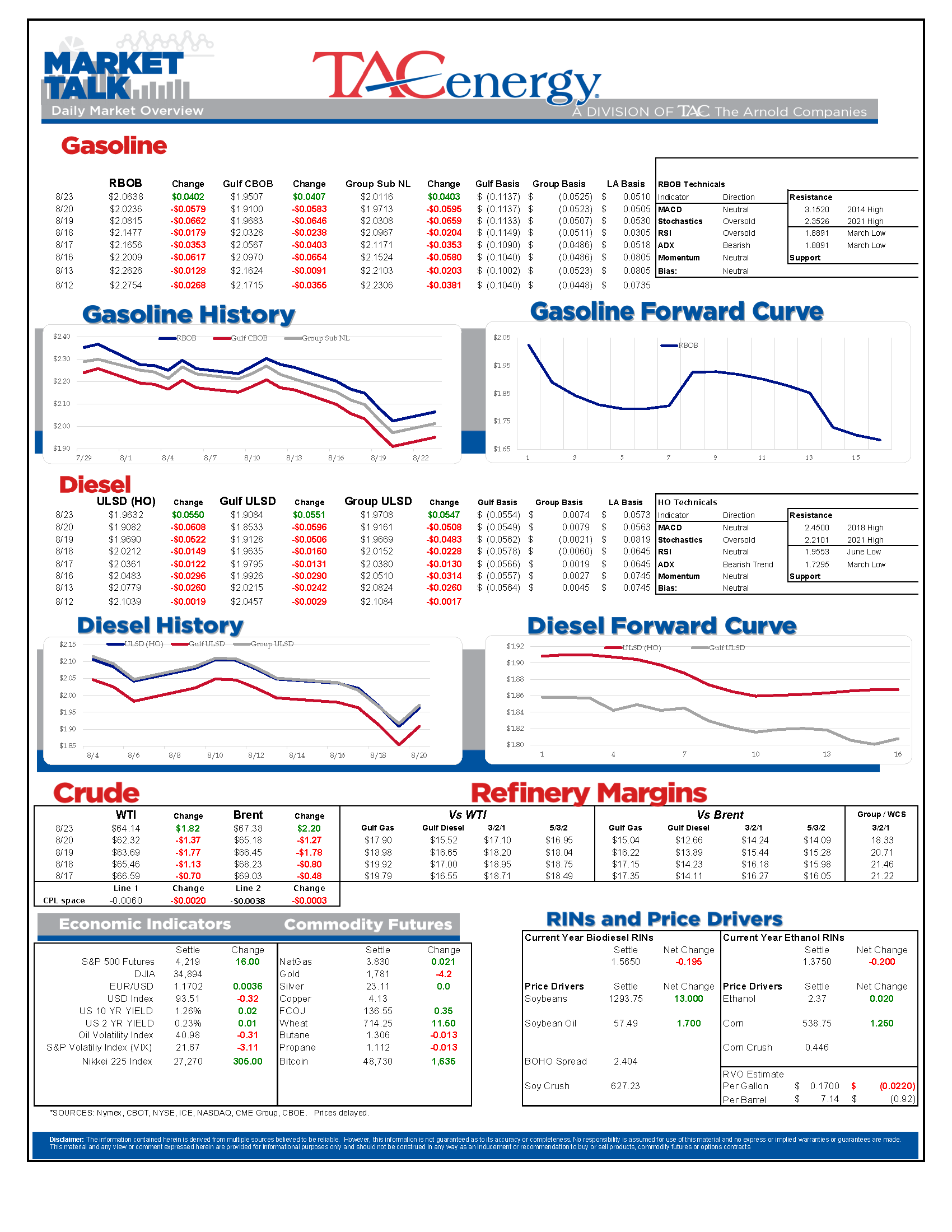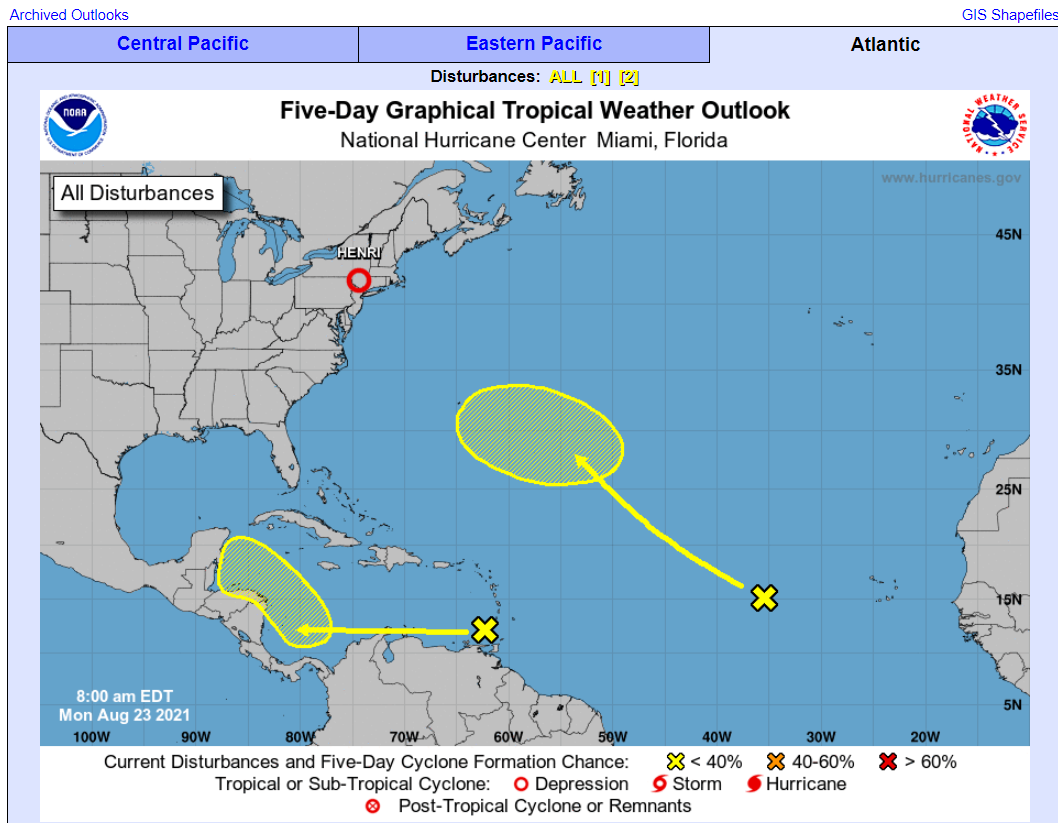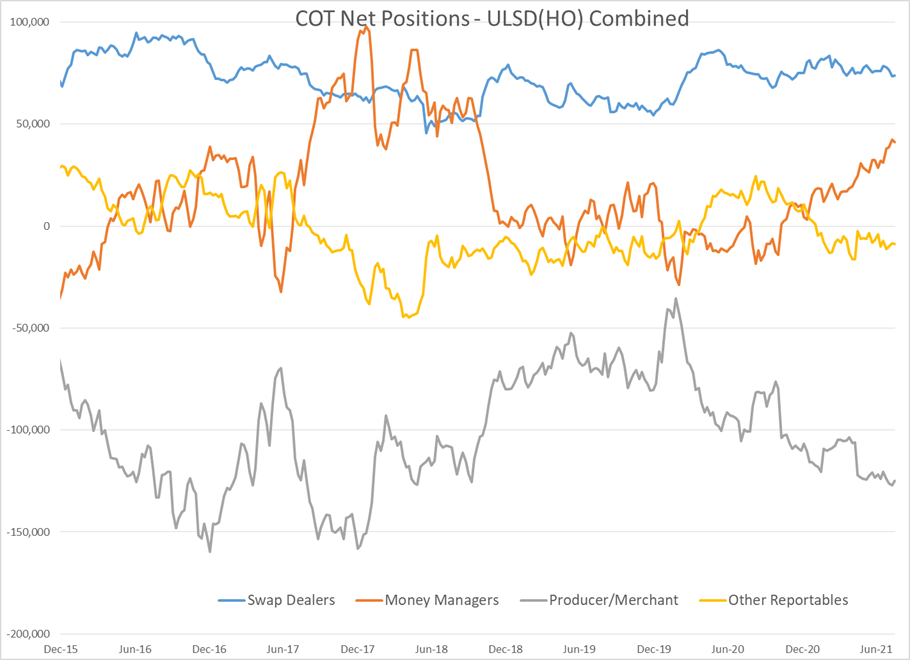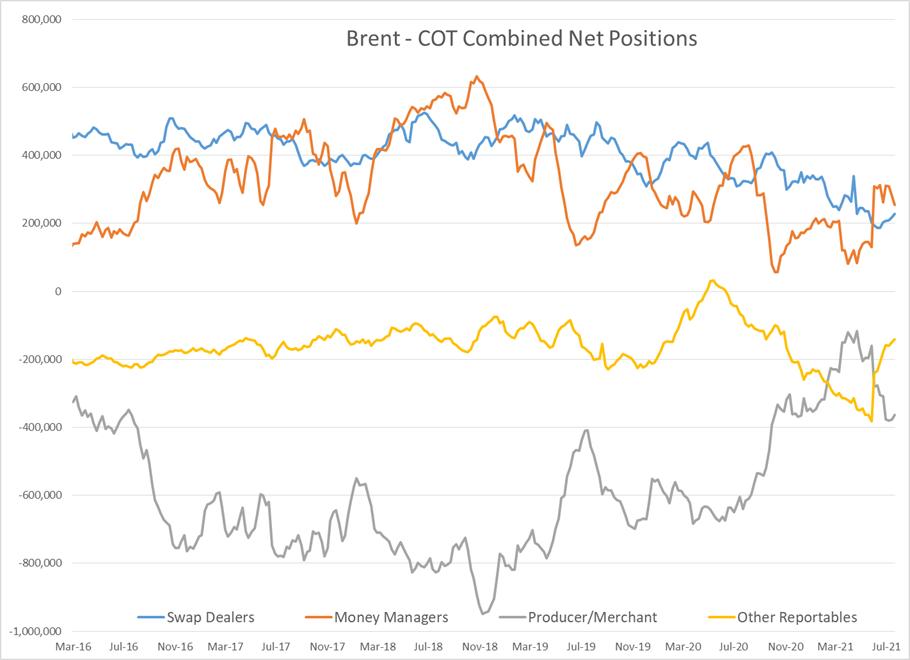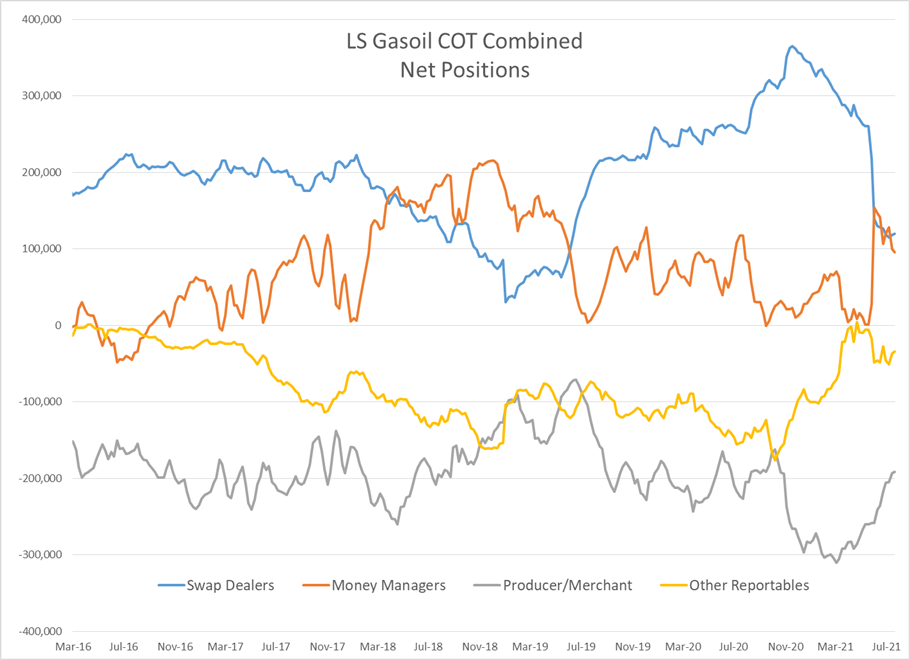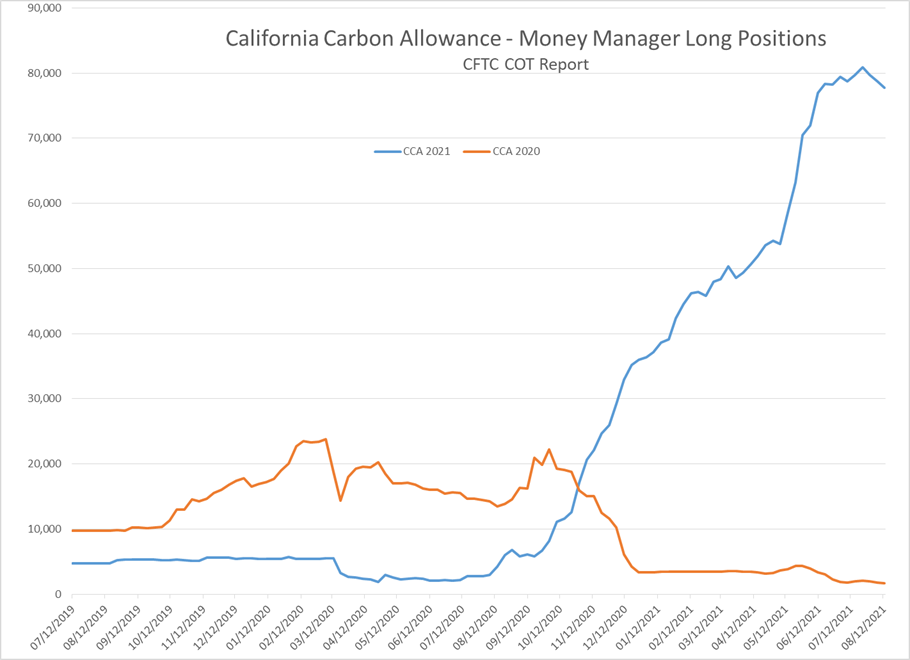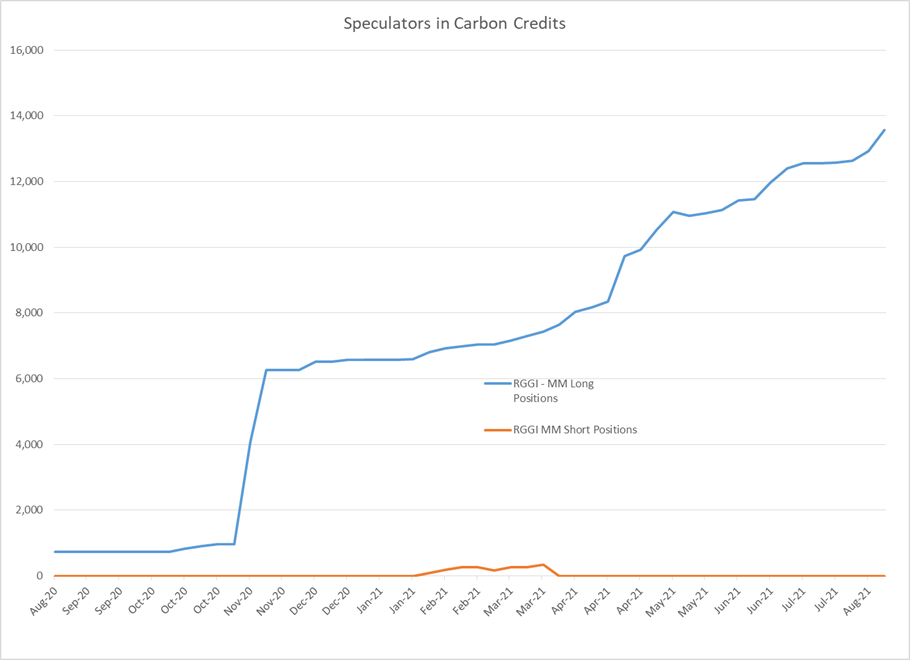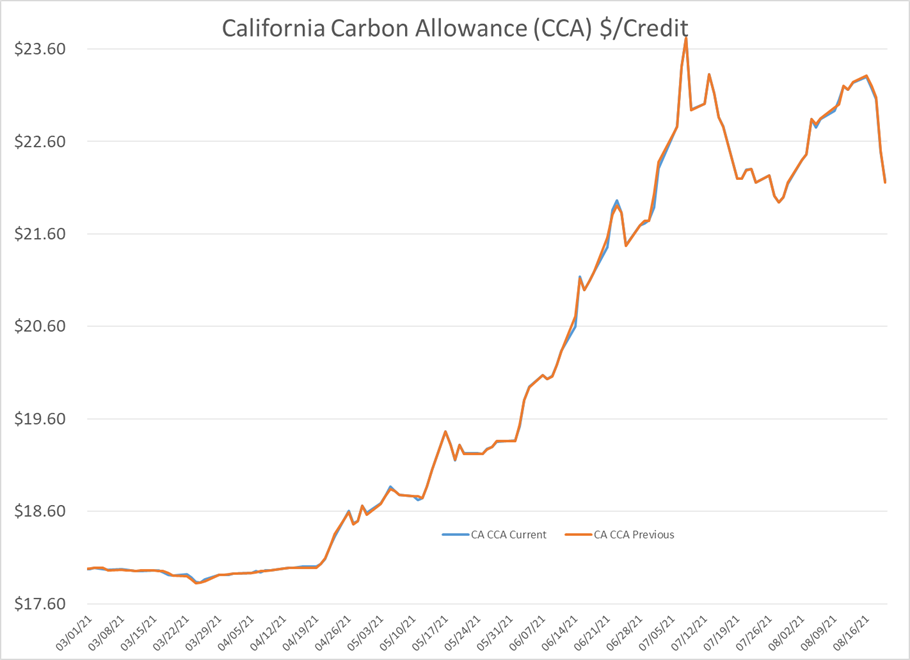Energy Futures Get A Bounce After 7 Days of Selling

Energy futures are getting a bounce after 7 consecutive days of selling, giving the bulls a temporary reprieve, and delaying a push towards the March lows.
The remnants of Henri continue to dump heavy rain across parts of the North East, and while inland flooding will be a very real threat for the next couple of days, many areas are breathing a sigh of relief that the storm damage appears to be minimal. Power outages are relatively minor, and most of the fuel terminals in CT and RI that closed ahead of the storm were already reopened Sunday night. There’s still a lot of rain yet to come before this storm moves offshore tomorrow morning – and parts of NJ and NY that weren’t directly in the storm’s path seem to have taken the worst of it - but at this point, it appears we’ve dodged any major supply disruptions from this event, and now it’s a question of how much it will hit demand as drivers stay off the roads.
The National Hurricane Center is tracking 2 new storm systems this week, but both have low odds of development, and early models suggest neither one will be a threat to refining country.
After RINs saw heavy selling on Thursday pushing prices down by roughly a dime, they dropped another 20 cents on Friday after multiple reports were released that the EPA was recommending reducing blending obligations for 2021, but increasing them for 2022. Based on the market reaction, many didn’t care about the “increase in 2022” part. While those recommendations still have to go through an approval period before becoming official, it looks like we’ll get to see another court battle over the Small Refinery Exemption portion of the RFS as Delek sued the EPA last week for failing to respond to its SRE request from 2019. This isn’t exactly news, as Delek had provided a notice of intent to sue the EPA for this issue 18 months ago, but should finally force the agency into making a decision that could set an important precedent.
Money managers cut back on their net length in energy contracts across the board last week, but the moves were relatively small, suggesting there was probably more liquidation happening after the report data was compiled last Tuesday. WTI length held by the large-speculative category of trader dropped to its lowest level since the rally began last November. Refined products meanwhile actually saw new long positions added, but those were barely edged out by new short positions on the week. ULSD contracts continue to see large speculative bets on higher prices near 3 year highs, which could create more volatility if those funds decide they’re better off playing Robin Hood or crypto than the CME.
While interest in petroleum futures may be waning, speculators continue to add more length in carbon positions. RGGI credits saw managed money reach a new record for speculative length last week, without a single short position reported for that trade category. CCAs did see a small pullback in speculative length for a 2nd week, which may have contributed to a larger pullback in prices following the 3rd quarter credit auction.
Baker Hughes reported 8 more oil rigs were put to work last week, 6 of which were in the “other” category of smaller basins, with the remaining 2 coming from the Permian. The total US oil rig count is now 233 rigs above its low set last year, but remains 278 rigs below where we saw it just before the COVID lockdowns started, even though prices were $10-$15/barrel lower then than they are today.
Click here to download a PDF of today's TACenergy Market Talk.
Latest Posts
Gasoline Futures Are Leading The Way Lower This Morning
The Sell-Off Continues In Energy Markets, RBOB Gasoline Futures Are Now Down Nearly 13 Cents In The Past Two Days
Week 15 - US DOE Inventory Recap
Prices To Lease Space On Colonial’s Main Gasoline Line Continue To Rally This Week
Social Media
News & Views
View All
Gasoline Futures Are Leading The Way Lower This Morning
It was a volatile night for markets around the world as Israel reportedly launched a direct strike against Iran. Many global markets, from equities to currencies to commodities saw big swings as traders initially braced for the worst, then reversed course rapidly once Iran indicated that it was not planning to retaliate. Refined products spiked following the initial reports, with ULSD futures up 11 cents and RBOB up 7 at their highest, only to reverse to losses this morning. Equities saw similar moves in reverse overnight as a flight to safety trade soon gave way to a sigh of relief recovery.
Gasoline futures are leading the way lower this morning, adding to the argument that we may have seen the spring peak in prices a week ago, unless some actual disruption pops up in the coming weeks. The longer term up-trend is still intact and sets a near-term target to the downside roughly 9 cents below current values. ULSD meanwhile is just a nickel away from setting new lows for the year, which would open up a technical trap door for prices to slide another 30 cents as we move towards summer.
A Reuters report this morning suggests that the EPA is ready to announce another temporary waiver of smog-prevention rules that will allow E15 sales this summer as political winds continue to prove stronger than any legitimate environmental agenda. RIN prices had stabilized around 45 cents/RIN for D4 and D6 credits this week and are already trading a penny lower following this report.
Delek’s Big Spring refinery reported maintenance on an FCC unit that would require 3 days of work. That facility, along with several others across TX, have had numerous issues ever since the deep freeze events in 2021 and 2024 did widespread damage. Meanwhile, overnight storms across the Midwest caused at least one terminal to be knocked offline in the St. Louis area, but so far no refinery upsets have been reported.
Meanwhile, in Russia: Refiners are apparently installing anti-drone nets to protect their facilities since apparently their sling shots stopped working.
Click here to download a PDF of today's TACenergy Market Talk.

The Sell-Off Continues In Energy Markets, RBOB Gasoline Futures Are Now Down Nearly 13 Cents In The Past Two Days
The sell-off continues in energy markets. RBOB gasoline futures are now down nearly 13 cents in the past two days, and have fallen 16 cents from a week ago, leading to questions about whether or not we’ve seen the seasonal peak in gasoline prices. ULSD futures are also coming under heavy selling pressure, dropping 15 cents so far this week and are trading at their lowest level since January 3rd.
The drop on the weekly chart certainly takes away the upside momentum for gasoline that still favored a run at the $3 mark just a few days ago, but the longer term up-trend that helped propel a 90-cent increase since mid-December is still intact as long as prices stay above the $2.60 mark for the next week. If diesel prices break below $2.50 there’s a strong possibility that we see another 30 cent price drop in the next couple of weeks.
An unwind of long positions after Iran’s attack on Israel was swatted out of the sky without further escalation (so far anyway) and reports that Russia is resuming refinery runs, both seeming to be contributing factors to the sharp pullback in prices.
Along with the uncertainty about where the next attacks may or may not occur, and if they will have any meaningful impact on supply, come no shortage of rumors about potential SPR releases or how OPEC might respond to the crisis. The only thing that’s certain at this point, is that there’s much more spare capacity for both oil production and refining now than there was 2 years ago, which seems to be helping keep a lid on prices despite so much tension.
In addition, for those that remember the chaos in oil markets 50 years ago sparked by similar events in and around Israel, read this note from the NY Times on why things are different this time around.
The DOE’s weekly status report was largely ignored in the midst of the big sell-off Wednesday, with few noteworthy items in the report.
Diesel demand did see a strong recovery from last week’s throwaway figure that proves the vulnerability of the weekly estimates, particularly the week after a holiday, but that did nothing to slow the sell-off in ULSD futures.
Perhaps the biggest next of the week was that the agency made its seasonal changes to nameplate refining capacity as facilities emerged from their spring maintenance.
PADD 2 saw an increase of 36mb/day, and PADD 3 increased by 72mb/day, both of which set new records for regional capacity. PADD 5 meanwhile continued its slow-motion decline, losing another 30mb/day of capacity as California’s war of attrition against the industry continues. It’s worth noting that given the glacial pace of EIA reporting on the topic, we’re unlikely to see the impact of Rodeo’s conversion in the official numbers until next year.
Speaking of which, if you believe the PADD 5 diesel chart below that suggests the region is running out of the fuel, when in fact there’s an excess in most local markets, you haven’t been paying attention. Gasoline inventories on the West Coast however do appear consistent with reality as less refining output and a lack of resupply options both continue to create headaches for suppliers.


